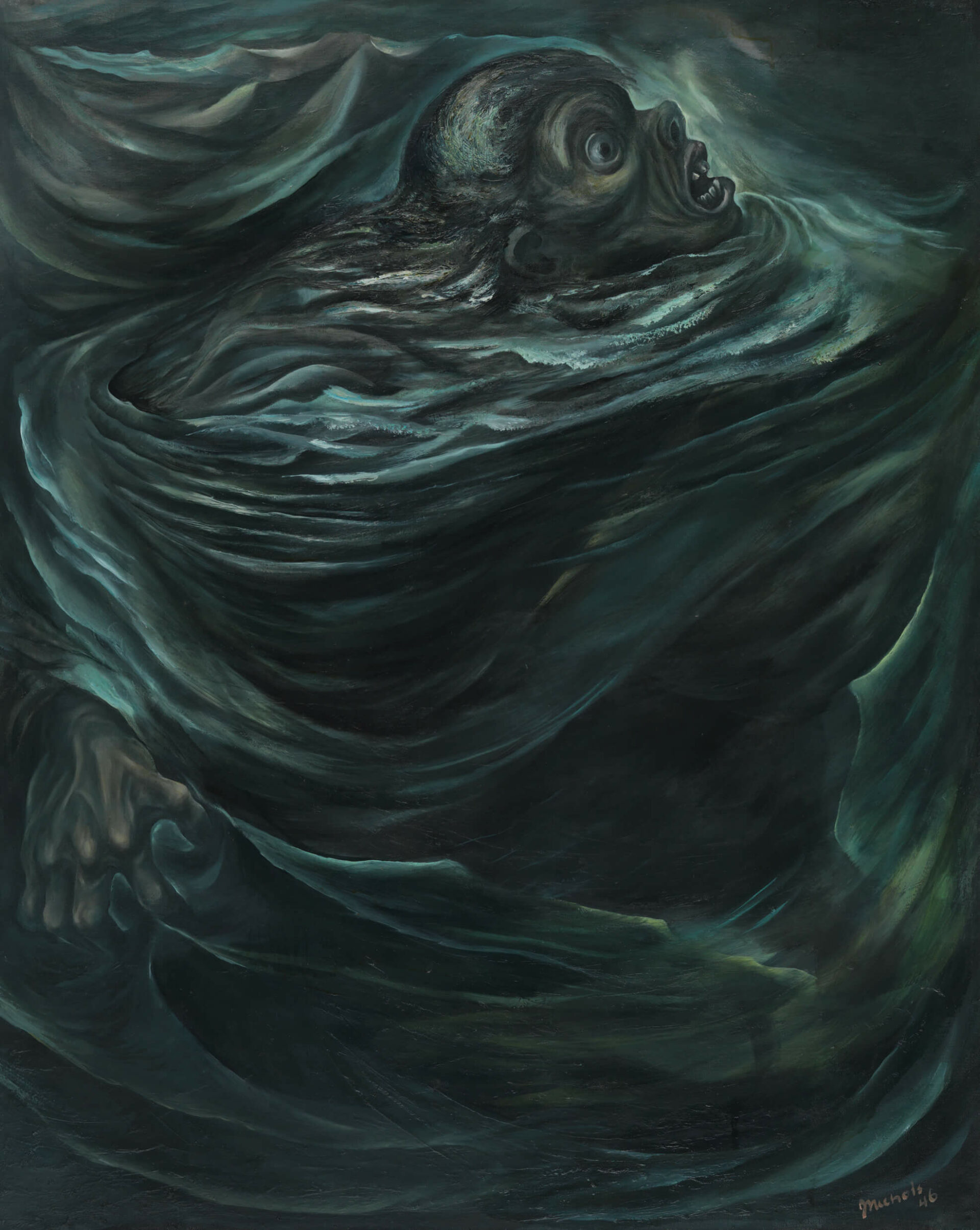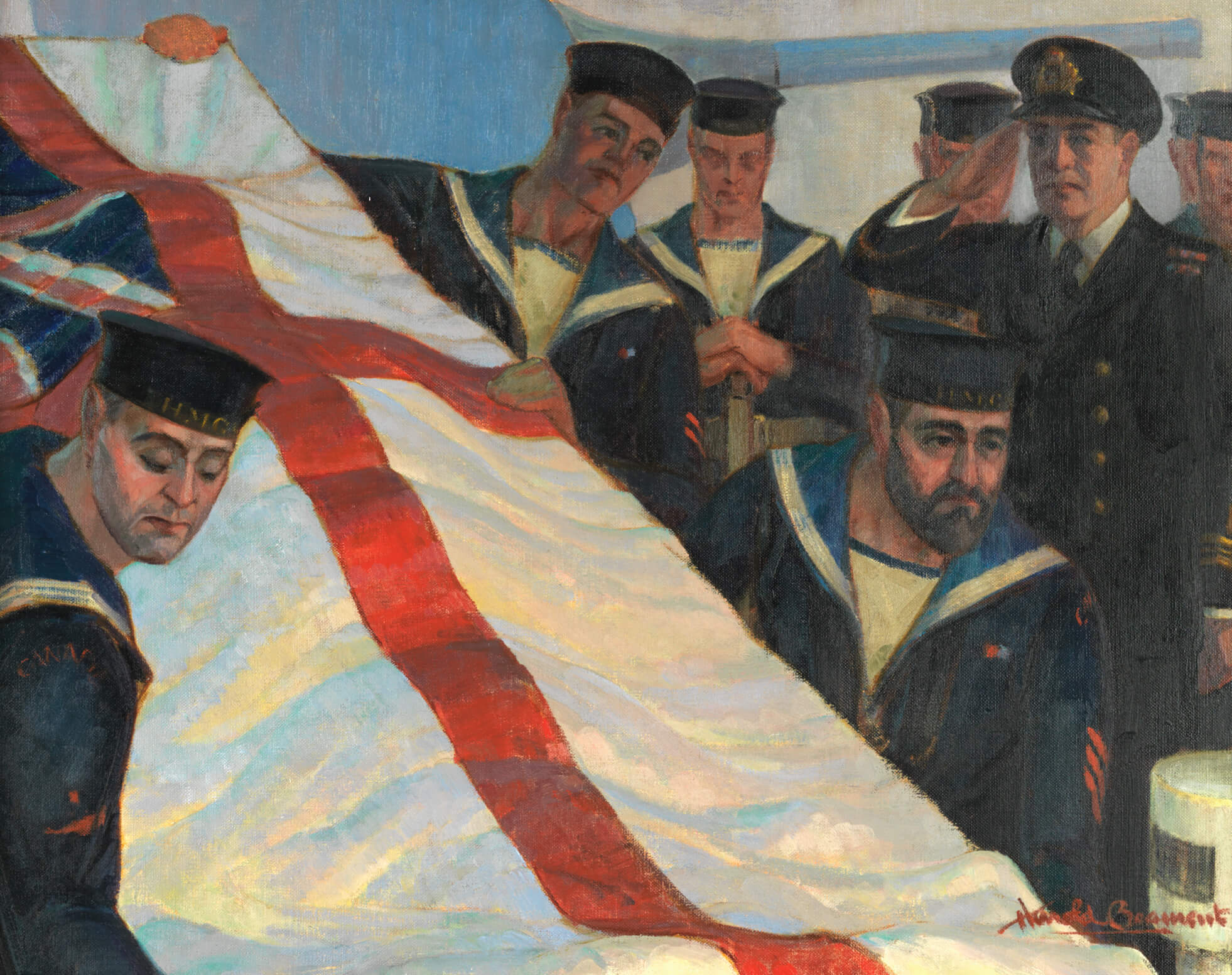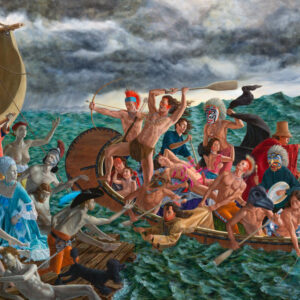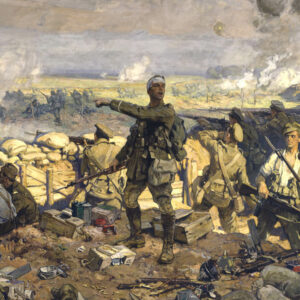Drowning Sailor 1946

Jack Nichols, Drowning Sailor, 1946
Oil on canvas, 76.2 x 61 cm
Beaverbrook Collection of War Art, Canadian War Museum, Ottawa
Jack Nichols (1921–2009) saw a man drown while he was on board HMCS Iroquois during the attempted evacuation of Brest, France, by the Germans in August 1944. The image seared itself on his memory, and he completed Drowning Sailor in Ottawa more than a year later, in 1946. In the painting, a terrified German mariner clutches uselessly at the water as he is pulled down into its depths. His eyes bulge, his mouth opens in a scream, and his face convulses in terror. The drowning sailor could be Everyman as he expresses a universal emotion: fear in the face of death. Describing this painting in 1998, Nichols commented, “When you are drowning, you lose your nationality, don’t you?”

Most naval actions take place in complete darkness, with the light from explosions, stars, or the moon providing the only source of illumination. That Nichols saw anything of the subject of Drowning Sailor was due to the presence of fuel oil from a nearby sinking German vessel floating on the water’s surface. The oil reflected any available light and illuminated the drowning sailor’s agonizing demise. All those who died at sea ended up in water. The painting Burial at Sea, 1944, by Harold Beament (1898–1984), for example, depicts the funeral of a merchant sailor who died after his ship was torpedoed, though in his case he was sent to the deep with appropriate honours and respect.
Very few Second World War paintings deal with death, yet it was an ever-present reality for almost everyone involved in the war. Death at sea was feared, particularly if it was slow. Similarly, few war artists created night scenes, and Nichols’s drawings and paintings are unique within the Canadian War Records because of the dark palette that characterizes his nocturnal subjects.
Nichols’s experience as a deckhand on a Great Lakes freighter led to a 1943 commission from the National Gallery of Canada to depict the activities of the Canadian Merchant Navy. In February 1944, he enrolled as a sub-lieutenant in the Royal Canadian Naval Volunteer Reserve and was appointed an official Canadian war artist in April 1944 with the rank of lieutenant. Nichols was present at the D-Day landings in Normandy in June 1944, and he later sketched on a number of warships before being released from the navy in October 1946.

 About the Author
About the Author
 More Online Art Books
More Online Art Books
 Acknowledgements
Acknowledgements